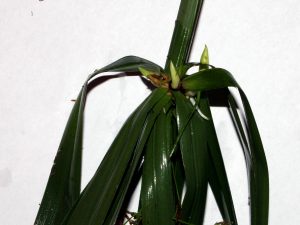Propagating Cyperus alternifolius
I had been growing Cyperus alternifolius some time ago. It’s a rewarding plant that can easily withstand drought, neglect and constant wet and boggy conditions. It’s not hardy enough to survive most of our winters outside, so I need to take it inside during the cold months. Last winter, I tried placing my Cyperus plants into deeper water to protect it from freezing. I doubt they froze, but none of them survived.

Sadly I also lost my Cyperus papyrus last winter. It refused to overwinter inside and froze to death outside. If I get my hands on it, I’ll keep it in a bit less humid soil during the winter, I’ve kept mine in water and it sadly turned to mush before the spring arrived.










